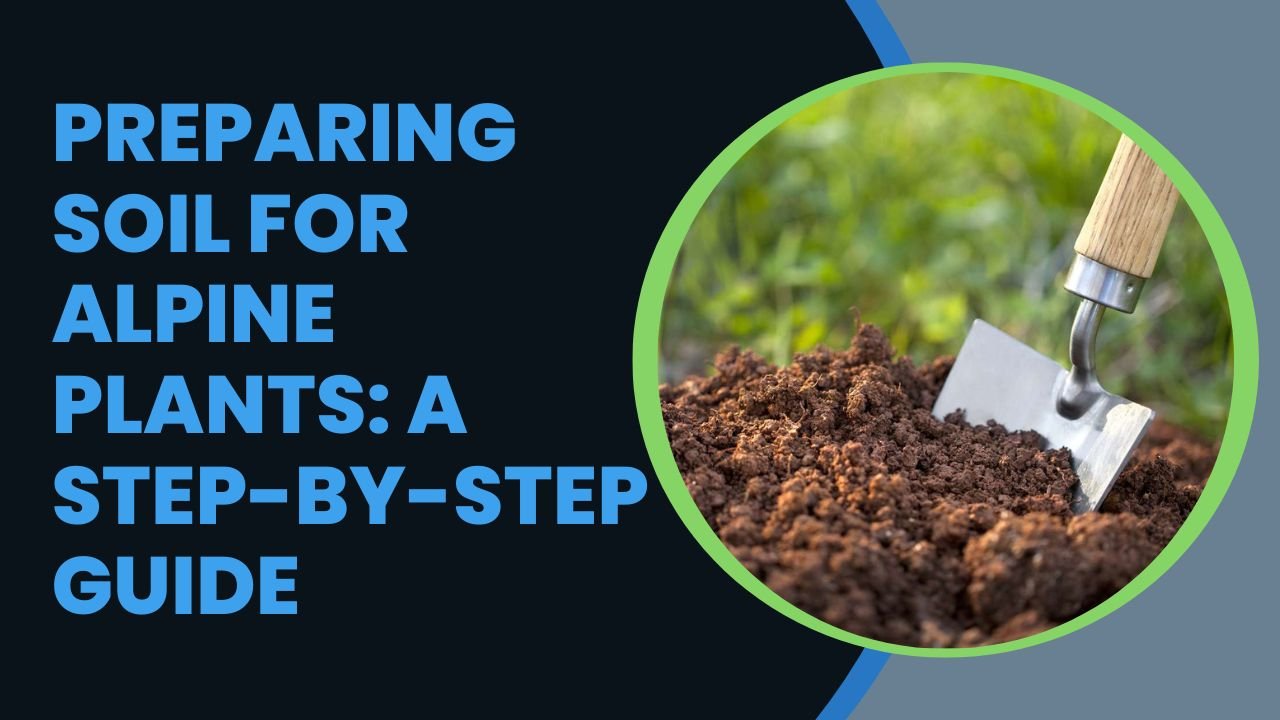Alpine plants are a beautiful addition to any garden or landscape. With their vibrant colors and unique growth habits, they can transform a dull space into a stunning alpine oasis. However, for these plants to thrive, it’s crucial to prepare the soil properly.
In this step-by-step guide, we will explore the essential aspects of soil preparation for alpine plants, ensuring that you can create the ideal growing conditions and enjoy a successful garden.

Understanding Alpine Plants
This section will delve into the characteristics of alpine plants, including their adaptability to harsh conditions and their preference for specific soil types. We’ll explain how their natural habitat influences their growth patterns and why it’s crucial to replicate these conditions when cultivating them.
Characteristics
Here, we’ll discuss the common traits of alpine plants, such as their dwarf size, dense foliage, and resistance to cold temperatures. By understanding these characteristics, gardeners can select suitable varieties and provide the necessary care.
Soil Requirements
In this subheading, we’ll explore the specific soil requirements of alpine plants, including their preference for well-draining soil with adequate organic matter content. We’ll highlight the importance of achieving the right balance of moisture retention and proper drainage for optimal plant growth.
Choosing the Right Location
Selecting the right location for your alpine plants is crucial. In this section, we’ll discuss the factors to consider, such as sunlight exposure, protection from strong winds, and avoiding areas prone to waterlogging. We’ll provide practical tips for identifying the ideal spot in your garden.
Testing the Soil
To create the optimal soil conditions, it’s essential to test the existing soil. This section will cover the two primary tests: pH testing and nutrient testing. We’ll explain the significance of each test and how to interpret the results to make informed decisions about soil amendment.
pH Testing
pH levels play a vital role in plant nutrition and nutrient availability. We’ll guide readers on how to conduct a pH test and how to adjust the pH if necessary, ensuring the soil pH aligns with the specific requirements of alpine plants.
Nutrient Testing
Nutrient deficiencies or imbalances can hinder plant growth. We’ll provide insights into nutrient testing methods and explain how to address any deficiencies by incorporating organic fertilizers or soil amendments.
Soil Preparation
This section will focus on the step-by-step process of preparing the soil for alpine plants. It will cover essential tasks such as removing weeds, loosening the soil, adding organic matter, amending soil texture, and improving drainage. Each step will be explained in detail, providing clear instructions and practical tips.
Removing Weeds
Weeds compete with alpine plants for nutrients and space. We’ll describe effective weed removal techniques to ensure a weed-free environment for optimal plant growth.
Loosening the Soil
Alpine plants thrive in well-draining soil, so it’s crucial to loosen compacted soil. We’ll explain various methods, such as tilling and aerating, to enhance soil structure and promote root penetration.
Adding Organic Matter
The addition of organic matter improves soil fertility and nutrient-holding capacity. We’ll discuss the different types of organic matter, such as compost and well-rotted manure, and explain how to incorporate them into the soil effectively.
Amending Soil Texture
Alpine plants often prefer a specific soil texture. We’ll explain how to modify soil texture by incorporating sand, clay, or organic matter to achieve the ideal balance for your plants’ needs.
Improving Drainage
Poor drainage can be detrimental to alpine plants. In this section, we’ll provide guidance on improving soil drainage through techniques like raised beds, slope adjustments, and the addition of coarse materials.
Mulching and Watering
Mulching and proper watering are essential for maintaining optimal soil moisture levels for alpine plants. This section will cover the importance of mulch, different types of mulching materials, and effective watering techniques to prevent waterlogging or drought stress.
Applying Mulch
We’ll explain how to apply mulch around alpine plants to conserve moisture, regulate soil temperature, suppress weeds, and enhance overall plant health. Readers will learn the appropriate mulching depth and frequency.
Watering Techniques
Proper watering is crucial for alpine plants, as they have specific moisture requirements. We’ll provide guidelines on watering frequency, amount, and best practices for watering alpine plants, considering the season and weather conditions.
Planting Alpine Plants
This section will focus on selecting suitable alpine plants and the correct planting techniques. We’ll guide readers on factors to consider, such as plant size, bloom time, and hardiness zones. We’ll also explain the proper planting depth and spacing for optimal growth.
Choosing the Right Plants
Different alpine plants have varying requirements. We’ll highlight popular alpine plant species and their unique characteristics, helping readers make informed choices based on their preferences and environmental conditions.
Planting Techniques
We’ll provide step-by-step instructions on how to plant alpine plants correctly, emphasizing the importance of proper handling, soil placement, and watering immediately after planting.
Maintenance and Care
Alpine plants require ongoing maintenance to thrive. This section will cover key aspects of their care, including fertilizing, pruning, and controlling pests and diseases.
Fertilizing
We’ll explain the importance of regular fertilization for alpine plants and provide guidance on selecting the right fertilizer type, application frequency, and dosage. We’ll also discuss organic alternatives and the potential risks of over-fertilization.
Pruning and Deadheading
Proper pruning helps maintain the shape and vigor of alpine plants. We’ll describe pruning techniques for different types of alpine plants and explain the benefits of deadheading spent blooms to promote continuous flowering.
Controlling Pests and Diseases
Alpine plants can be susceptible to certain pests and diseases. We’ll discuss common issues, such as aphids, slugs, and fungal infections, and provide organic and integrated pest management strategies for prevention and control.
Conclusion
In conclusion, preparing the soil for alpine plants is a crucial step in ensuring their successful growth and vibrant display. By understanding the specific soil requirements, testing and amending the soil as needed, and following proper planting and maintenance practices, gardeners can create an optimal environment for these beautiful and resilient plants to thrive.
